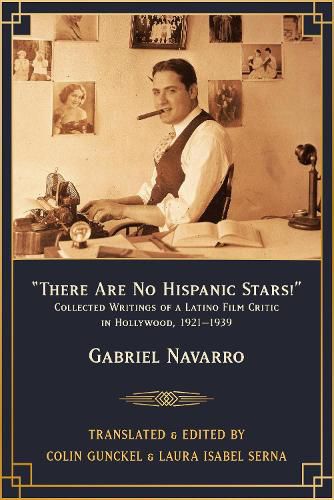Readings Newsletter
Become a Readings Member to make your shopping experience even easier.
Sign in or sign up for free!
You’re not far away from qualifying for FREE standard shipping within Australia
You’ve qualified for FREE standard shipping within Australia
The cart is loading…






In the 1920s and 1930s a uniquely Mexican American entertainment culture flourished across the southwestern United States. Spanish-language newspapers offered theater listings, coverage of favorite performers, cultural criticism, and serialized novels that thematized entertainment culture. Gabriel Navarro was a key figure in this milieu. "There Are No Hispanic Stars!" assembles the novellas and articles that represent his extensive body of film and cultural criticism. Covering a range of topics from the lives of Hollywood's well-known Mexican actors to the plight of Mexican extras and the formation of amateur film clubs, Navarro allowed his readers to participate in the construction of a Latina/o Hollywood. At the same time, he urged Hollywood not to overlook its Latina/o audiences.
Together, these writings present a lively look at the film culture that emerged in the Southwest's Mexican immigrant community. The introduction situates Navarro's writing within the context of Mexican-oriented journalism and cultural politics of the era.
$9.00 standard shipping within Australia
FREE standard shipping within Australia for orders over $100.00
Express & International shipping calculated at checkout
In the 1920s and 1930s a uniquely Mexican American entertainment culture flourished across the southwestern United States. Spanish-language newspapers offered theater listings, coverage of favorite performers, cultural criticism, and serialized novels that thematized entertainment culture. Gabriel Navarro was a key figure in this milieu. "There Are No Hispanic Stars!" assembles the novellas and articles that represent his extensive body of film and cultural criticism. Covering a range of topics from the lives of Hollywood's well-known Mexican actors to the plight of Mexican extras and the formation of amateur film clubs, Navarro allowed his readers to participate in the construction of a Latina/o Hollywood. At the same time, he urged Hollywood not to overlook its Latina/o audiences.
Together, these writings present a lively look at the film culture that emerged in the Southwest's Mexican immigrant community. The introduction situates Navarro's writing within the context of Mexican-oriented journalism and cultural politics of the era.